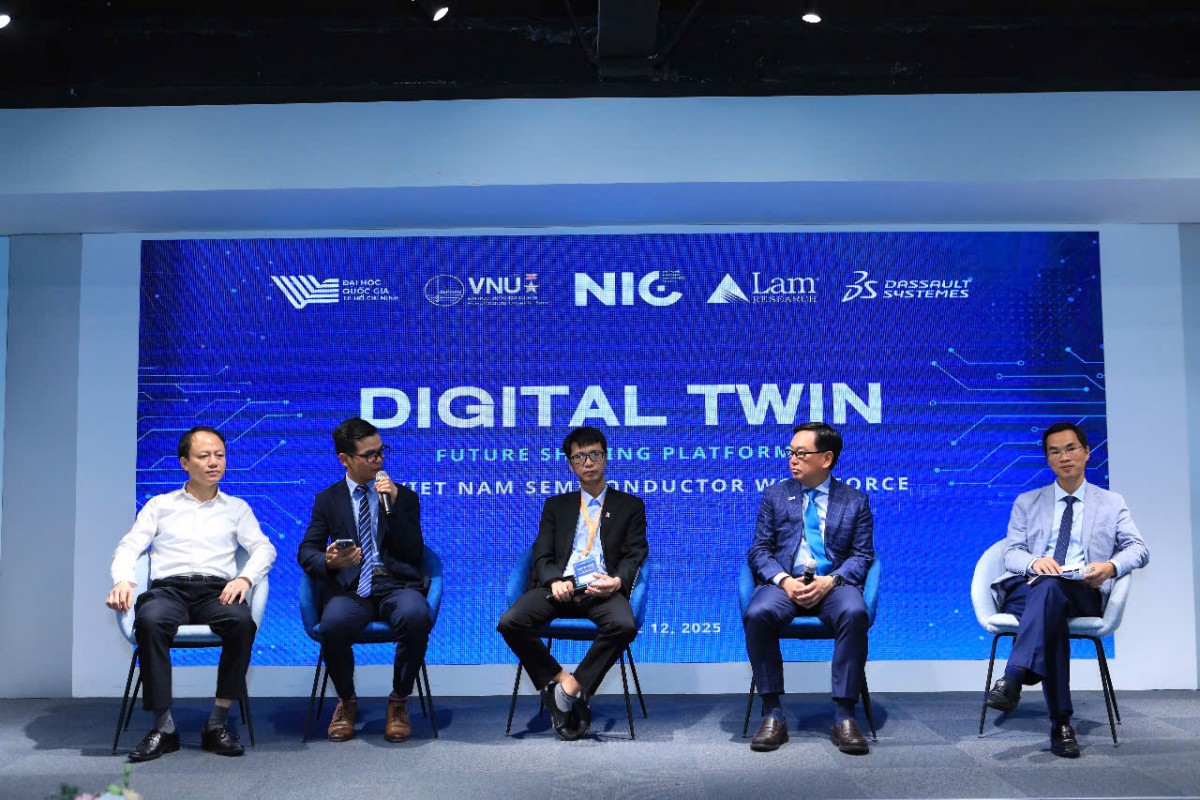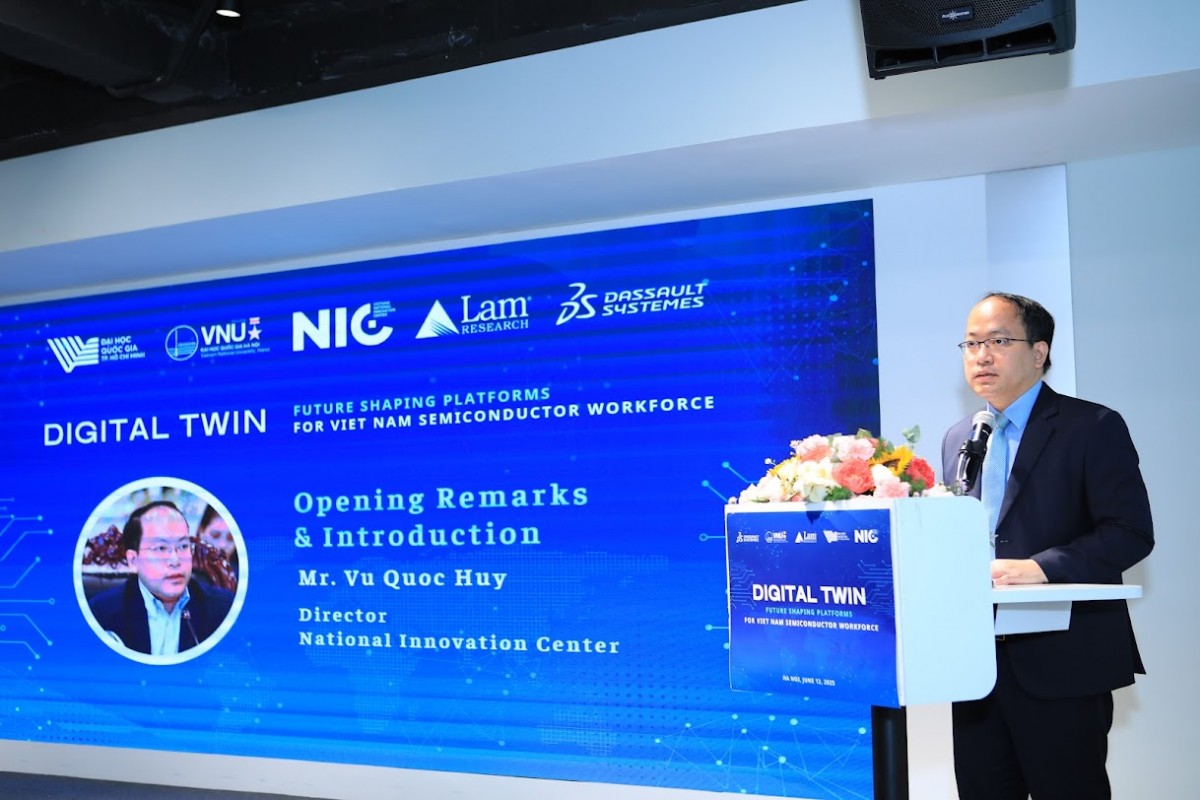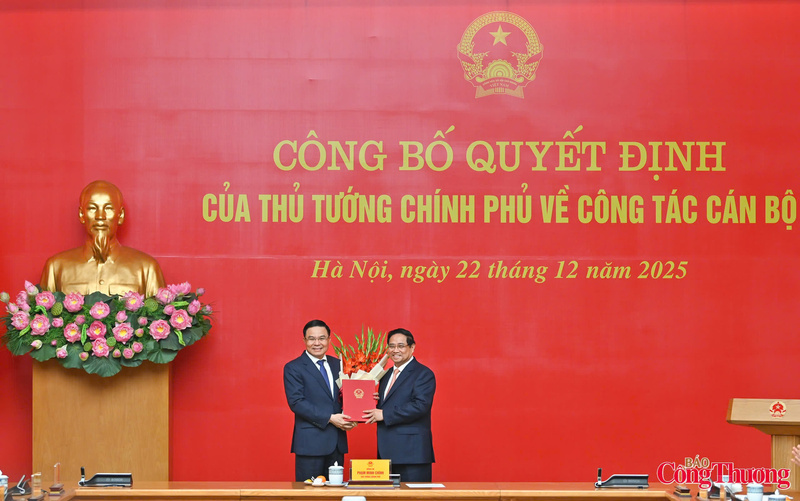
Vietnam to review over 20 years of Resolution 36 on overseas Vietnamese
19:05 | 23/03/2025 16:32 | 23/12/2025News and Events
Vietnam has set an ambitious target of training 50,000 high-quality professionals in the semiconductor industry by 2030. While this is a challenging objective, it is seen as achievable if the country effectively leverages technology in workforce development.
 |
| Experts at the Forum "Digital Twin - Future shaping platform for Vietnam's semiconductor workforce". |
Concerns over talent shortage in high-tech sector
According to experts, the country’s semiconductor ecosystem recorded nearly USD 17 billion in revenue in 2023. The sector is projected to grow at a compound annual growth rate (CAGR) of approximately 11% between 2024 and 2027, reaching USD 31 billion by 2027. The market size is expected to range from USD 18.23 to 18.6 billion in 2024, with a steady growth of 11–11.5% annually, and forecast to reach USD 36.64 billion by 2033 at a CAGR of around 9.3%.
Currently, Vietnam has about 6,000 semiconductor engineers working across more than 40 domestic enterprises. However, the country faces an annual demand for 150,000 information technology and engineering professionals, while the supply only meets 40–50% of this demand, highlighting a critical challenge in developing a qualified workforce.
The demand for semiconductor talent is driven by both infrastructure expansion and foreign investment. For instance, the Saigon Hi-Tech Park (SHTP), which spans 326 hectares and is being expanded to 913 hectares, hosts major global players such as Intel, Nidec, Jabil, Air Liquide, and Sonion—employing tens of thousands of workers.
In terms of foreign investment, major international firms have committed to significant projects in Vietnam. These include Amkor (USA) with a USD 1.6 billion chip packaging plant in Bac Ninh, Hana Micron (South Korea) with USD 930 million in planned investment by 2026, and Intel, which has established one of its largest chip assembly and testing plants in the country. These developments signal a growing demand for semiconductor talent.
To meet this demand, the Vietnamese government has issued Decision No. 1017/QĐ-TTg, which outlines the Program on Semiconductor Industry Workforce Development to 2030, with a vision to 2050. The goal is to train between 30,000 and 50,000 engineers by 2030.
The decision identifies semiconductor workforce development as a “breakthrough of breakthroughs” in high-quality human resource training. It emphasizes prioritization through special mechanisms, investment incentives, public funding, and support for both educators and students. It also calls for alignment between talent development and Vietnam’s strengths in semiconductor fields, supported by the tri-partite model of cooperation among the State, academia, and industry.
Digital twin technology paves the way for workforce development
Vietnam’s ambitions align with broader regional growth trends. The Asia-Pacific semiconductor market is projected to reach USD 505 billion by 2025 and USD 754 billion by 2030, with a CAGR of 8.3%. Semiconductor manufacturing equipment in Asia is also expected to grow from USD 77.5 billion in 2025 to USD 147.9 billion by 2033.
 |
| Vu Quoc Huy, Director of the National Innovation Center (NIC). |
In this global context, Vietnam aims to become a vital link in the semiconductor value chain. To support the goal of developing 50,000 skilled semiconductor professionals by 2030, the National Innovation Center (NIC) under the Ministry of Planning and Investment, in collaboration with Vietnam National University in Hanoi and Ho Chi Minh City, as well as tech corporations Lam Research (USA) and Dassault Systèmes (France), organized the “Digital Twin – Shaping the Future of Vietnam’s Semiconductor Industry” forum on June 12–13.
The forum sought to build a foundation for collaboration between government, academia, and industry to foster a high-quality semiconductor workforce. Experts from Vietnam and abroad discussed global trends, shared practical insights, and demonstrated the application of Digital Twin technology in education, research, and chip production. The forum underscored the importance of tripartite cooperation in workforce development, R&D, and supporting semiconductor startups.
During the event, Lam Research introduced its “Semiverse Solutions,” a fully digital ecosystem simulating semiconductor manufacturing processes such as etching, deposition, and cleaning. According to Andrew Goh, Vice President of Lam Research, this platform enables immersive training experiences through virtual factories, accelerating workforce readiness.
Meanwhile, Dassault Systèmes showcased its 3DExperience platform, a comprehensive solution that simulates the entire chip design-to-manufacturing process. Already implemented at international institutions like Purdue University (USA), this virtual twin technology enables students and engineers to access laboratory-grade simulations remotely, bridging the gap between theory and industry practice.
Vu Quoc Huy, Director of NIC, emphasized that Decision No. 1017/QĐ-TTg focuses on training engineers in IC design, chip packaging and testing, and fabrication. Additionally, Decision No. 1018/QĐ-TTg outlines a broader national strategy to integrate both foreign-invested and domestic enterprises into the global supply chain. It also positions technical universities as centers for talent development and innovation ecosystems alongside startups, investors, and research institutes.
The “Digital Twin – Shaping the Future of Vietnam’s Semiconductor Industry” forum represents a breakthrough in digital-based training models. Advanced digital platforms are expected to enhance Vietnam’s ability to produce internationally competitive talent in the semiconductor field.

19:05 | 23/03/2025 16:32 | 23/12/2025News and Events

19:05 | 23/03/2025 16:30 | 23/12/2025Trade

19:05 | 23/03/2025 23:26 | 22/12/2025Industry

19:05 | 23/03/2025 23:19 | 22/12/2025News and Events

19:05 | 23/03/2025 14:41 | 22/12/2025News and Events